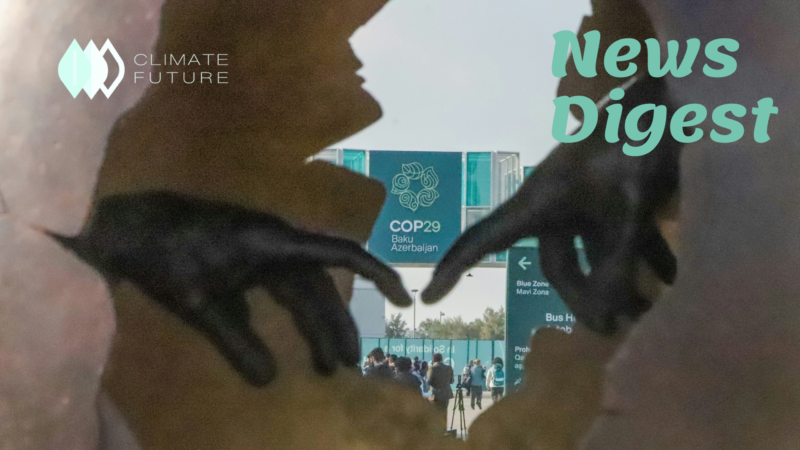How to unlock clean energy in South and Southeast Asia

The Kali Gandaki Hydroelectric Project in Nepal. The Kali Gandaki River flows from Mirmi to Beltari in central Nepal. Image: Asian Development Bank, CC BY-SA 3.0, via Flickr.
Significant opportunity exists for the development of renewable energy in South and Southeast Asia, as numerous governments have set aggressive net-zero targets. By 2030, the deployment of solar and wind power must expand fivefold to meet these targets. Nevertheless, financing such initiatives both domestically and abroad presents difficulties. Investment is hampered domestically by constrained fiscal space and risk aversion in financial systems dominated by banks. Because of their perceived high risk, renewable initiatives frequently require government funding. Bilateral and multilateral finance sources are important on the international stage, but a reliance on them that is too great might result in significant foreign debt. Promising models from Malaysia and India show how crucial it is to have open and honest procurement procedures and to use creditworthy intermediaries to draw in capital. Further propelling the development of renewable energy is the establishment of specialized lenders such as Non-Bank Finance Companies (NBFCs) and providing incentives for private investment, as exemplified by Malaysia’s Green Technology Financing Schemes. Despite obstacles, there are plenty of chances for nations to take note of effective models and move quickly to secure the funding they need for their futures in renewable energy.
Women in Southeast Asia’s conservation space face culture of harassment

Image: CIFOR, CC BY-SA 3.0, via Flickr.
In Southeast Asia, women and LGBTQ+ people are frequently the targets of sexual harassment in the conservation field. Because victims fear negative consequences or a lack of assistance, the culture discourages reporting. Uninvited sexual advances, crude remarks, and improper touching are experienced by women. The fear of losing their jobs, strained working relationships, or the hierarchy all make them unwilling to speak up. Laws against harassment are insufficient either. There is little enforcement, and some legal systems place a higher priority on victim-perpetrator reconciliation. Because of the stigma that still exists, LGBTQ+ people are particularly vulnerable. Conservation groups require precise protocols and reporting systems to improve the state of affairs. A more supportive workplace can be created through mentorship programs for women and allies among male coworkers. In the end, long-lasting reform requires a cultural revolution.
Shell abandons 2035 emissions target and weakens 2030 goal

Image: Open Grid Scheduler / Grid Engine, CC BY-SA 3.0, via Flickr.
The new energy transition plan review from Shell, the second-biggest oil and gas business in the world, weakened its climate ambitions. From a 2016 baseline, the corporation will cut the carbon intensity of the energy it sells by 15-20% by 2030, instead of the 20% objective it had set earlier. It also gave up on its 45% reduction goal for 2035. According to Shell, the reason for this adjustment is that it now prioritizes “value over volume” when selling electricity, including renewable energy. The business will decrease its reliance on oil products for transportation and increase its focus on commercial clients. Shell plans to increase its LNG business by 20–30% by 2030 and believes that LNG will play a “critical role” in the energy transition. Even yet, according to the IEA, there is currently enough LNG capacity to supply demand for the next 20 years. It contends that by lowering emissions from its activities, it has so far met its climate aims and that society as a whole is necessary for its net-zero plans. The business highlights that it is satisfying consumer demand for fossil fuels. The lowering of climate targets coincides with record profits achieved by Shell and other oil corporations as a result of higher fossil fuel prices. According to Shell’s CEO, “cutting oil and gas production is not healthy” and generating significant returns for shareholders is what drives the company’s investment strategy.
How can fashion’s net-zero future be paid for fairly?

Image: Ninara, CC BY-SA 3.0, via Flickr.
The global fashion market is over $2 trillion, but the industry’s shift to more environmentally friendly methods is having some difficulties. Large brands must split the cost with producers to meet their target of halving emissions by 2030. Even while these brands generate higher profits, the majority of the blame currently rests with clothing manufacturers in underdeveloped nations. A global climate fund, into which each link in the supply chain contributes according to their income, is one suggested remedy. In addition to cutting emissions, the business must get ready for climate-related extreme weather. These could impair workers’ livelihoods and cause production disruptions. Although manufacturers are already making improvements to ventilation, brands must also assist. Funding a worldwide fund to compensate workers for climate damages is one idea for brand involvement, as is subsidizing worker health insurance.
References
https://www.eco-business.com/opinion/how-to-unlock-clean-energy-in-south-and-southeast-asia/
https://www.eco-business.com/news/shell-abandons-2035-emissions-target-and-weakens-2030-goal/
https://www.eco-business.com/news/how-can-fashions-net-zero-future-be-paid-for-fairly/



